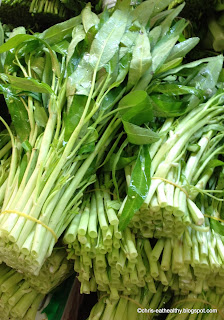I am not going to give a cookie recipe. I seldom make cookies and I have no particular talent at making them. Is it due to a lack of practice? I would like to believe that! I just want to record a special time I had while making cookies with two of my friends.
This was our 3rd "culinary meeting". The 1st one was at Ice’s place where she taught us to make Hakka Tea Cakes (chàah-gwó 茶粿), the 2nd one was at my flat and we made Quiche Lorraine (click here for recipe); and last Wednesday we met at Angel’s home to make double chocolate chip cookies.
While mixing the ingredients (see list below) we kept talking about various things. Haha!! And I did not take any picture.
Golden sugar, light muscovado {unrefined sugar cane - gives a treacle flavour}, butter, egg, flour, cocoa powder, dark chocolate chips, chopped walnuts and almond essence.
 |
| Forming the dough into small balls |
 |
The cookies placed on a silicone baking sheet
|
While the cookies were in the oven we stood on the balcony and admired the beautiful sea view. From time to time the sun was breaking through the thick layers of white clouds and brightening up part of the sky and the sea below. Big cargo ships were entering the fragrant harbour at a slow pace and some were leaving far away in the distance. As Angel pointed out it the traffic was unusually quiet for a week day.
Then the alarm went on and reminded us that we had cookies in the oven. We waited a few minutes just enough to be able to handle them with our bare fingers. They were soft in the middle and crunchy on the outside. One little comment: I just wonder if less sugar would work (a tad too sweet for my liking).
 |
| Our 1st batch of cookies |
 |
Our double chocolate chips cookies
cooling down before being savoured
|
We ended our morning by visiting Cyberport Arcade and Shopping Centre and had lunch at La Dynastie Restaurant. This Shanghainese restaurant was empty (it seems the whole building was empty) when we arrived at almost 2pm. We ordered a few dishes: sweet and sour grouper fillet, pork dumplings (xiao-long-bao), steamed vegetable buns and rice cakes (年糕)with syut-choi (preserved mustard cabbage), shredded bamboo and pork.
 |
Rice cakes with syut-choi, bamboo and pork
|
The food was okay (I have had much better food and service for the same price) but anyway we went there to have a simple lunch together before heading back to our respective home.
Cooking and baking together is a good way to get to know each other better and exchange ideas on food.
We realise that some people enjoy cooking but leafing through the pages of recipe books and looking at the photos of beautiful desserts is a good way to relax and make them happy.
Do you find this strange? Not particularly. Recipe books have no bad ending. The macarons always look awesome (mine are terrible), the meringue is always perfect (I never tried to make some), and the bread is always perfectly raised (sometimes I succeed!!). Aren’t recipes books similar to fairy-tales?
What about foodie blogs? They might not be like fairy-tales but besides the purpose of sharing recipes or reviewing a restaurant most of them are also entertaining and have amazing pictures. I don’t look at recipe books but like to visit food blogs, look at their photos and read their stories. I even sometimes found myself reading the list of ingredients of a particular dish even though I have no intention of making it!
To conclude here are a few photos I would like to add as they are related to that day (and post):
I love Klimt’s paintings and I cannot resist posting a picture of the artwork I saw in Angel’s complex’s lobby.
 |
| Artwork, inspired from “The Kiss” by Kustav Klimt |
I have not been impressed at all by Cyberport (數碼港 Sóu-máah-góng In Cantonese), its buildings, layout, and more particularly its atmosphere, but there are nice landscape gardens around the residential areas, and the views from the high-rise apartments are simply breathtaking.
 |
Flowers in the garden areas around the residences
|
 |
View from my friend’s balcony
|
Thanks Angel and Ice for this beautiful day!
































